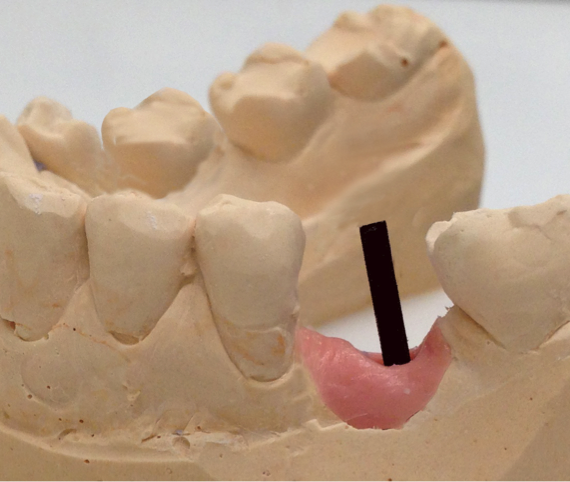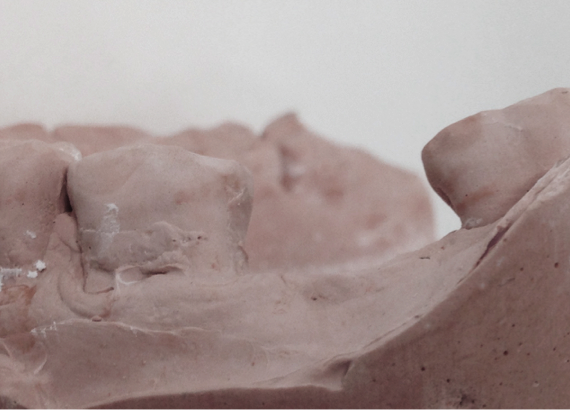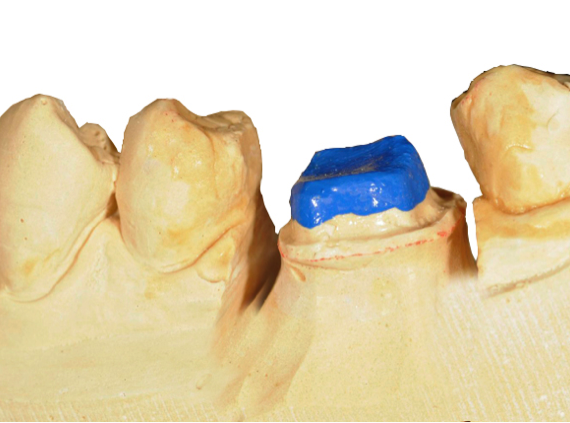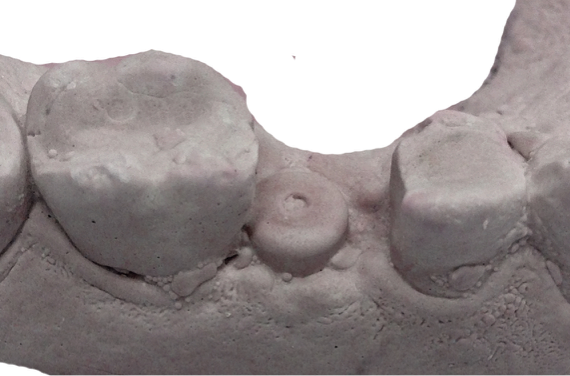Proximal surfaces
You put a great deal of care into properly shaping the prepared tooth, which is only natural since it’s the anchor for the future crown, and its contours will influence several aspects of the prosthesis, including how long it lasts. Beyond the efforts to shape the prepared tooth, we would like to draw your attention to the teeth adjacent to the future crown. The proximal surfaces of the neighbouring teeth are too often left in an imperfect state, which can include concavities or drill marks, or protrusions that will inevitably cause openings in the papillae, which often become traps for food particles. Whether the prepared tooth is natural or an implant, when the greatest contour of a proximal tooth is highly incisive and pronounced, it’s best to shave down the tooth so that the final crown is placed as parallel as possible. When there are amalgam or composite fillings present, preparing the proximal contacts should be a natural reflex.
Here are a few examples:

This implant site for tooth No. 36 has an adjacent molar that could be shaved down, clinical condition of the tooth permitting, to extend the distal contact surface, thereby reducing the gingiva in the interdental space. Even the distal surface of tooth No. 35 could be altered for improved parallelism.

Another similar example involves an MO composite restoration on tooth No. 37, which could easily be reshaped for better integration of the crown on implant in the edentulous space.

In cases where the adjacent tooth protrudes over the prepared tooth, to the extent that the base of the prepared tooth is wider than the mesial-distal width at the occlusal level, there will be obvious problems during insertion.

It will be difficult to position the future crown on implant on tooth No. 25 against tooth No. 26. The mesial surface of tooth No. 26 should be smoothed out to remove the rough edges and make more space for the implant.
We often encounter situations where the prosthetist has a hard time preparing the proximal surfaces, and where food traps could have been avoided by the strategic preparation of the adjacent teeth, which is why this newsletter is meant to serve as a simple checklist.





